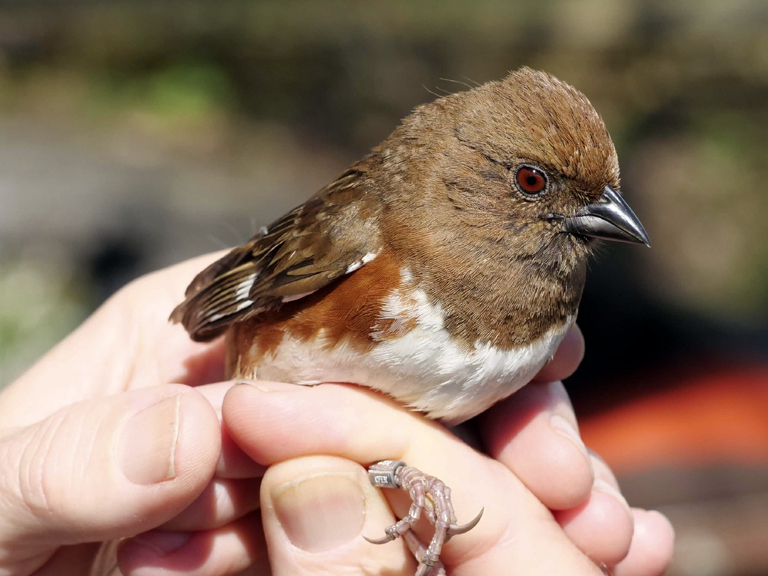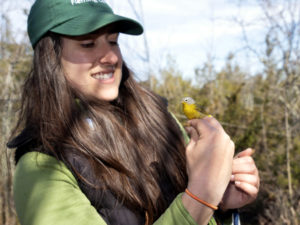County News
Spring birding festival

Bird observatory monitors health of avian species
For more than two decades, volunteers and professional biologists have been collecting data on bird species that pass through the Prince Edward Point Bird Observatory (PEPtBO) during their spring migration. A series of nets are used to capture the migrating birds, which are examined and tagged with a numbered metal band around one leg before being released. The health, sex and age of each captured bird is recorded, and the data are sent to the Canadian Wildlife Service (CWS). PEPtBO operates under the auspices of the CWS, which issues permits for the banding operation. Migratory birds are protected species, and permits are required to conduct research, which must meet certain ethical standards. Lesley Howes, a bird banding biologist with CWS, said there are about 1,000 people with permits, most of them associated with the 30 or so bird observatories in Canada, but also some in university research departments. Her office issues the permits, and she was visiting PEPtBO last Saturday to have a first-hand look at the station. “It’s important for me to interact with the people who are banding birds, to hear their point of view, and also to talk to the public about how birds are used in science,” she said. “Birds are a really important indicator of the environment in general. People are looking at birds to see what kinds of toxins are in the environment, the genetic diversity, or if they are carrying diseases such as avian influenza or Lyme disease.”

Assistant bander Lisa Martell holds a Nashville warbler to be brought back to the banding station.
The banding operations at PEPtBO are carried out under the supervision of station manager Matthew Iles. Most of the birds captured there are migrating to the northern boreal forests, and are only stopping in this area to replenish their energy after a long flight over Lake Ontario. “The real importance is that we’re able to assess populations of birds that don’t breed or overwinter here,” said Iles. “We’re getting the most valuable data from birds that are spending the winter in Central or even South America, and there’s limited research going on in those locations.” The current bird banding station is housed in a small wooden shed, and Iles is looking forward to the opening of a much larger, more modern facility later this year. “The new lab is state of the art and beautifully designed, and it’s going to be fantastic, not just for conducting really thorough science, but also for providing comprehensive outreach to the public.”
The public outreach component is an important part of the operation of the bird observatory. Lisa Martell is the assistant bander at PEPtBO. She is a certified fish and wildlife technician, and has worked with animal rehabilitation organizations as far afield as Australia. This is her second year at PEPtBO, and she enjoys interacting with visitors. “One thing that makes this place more special is that we’re very much open to the public,” she said. “Every day that we’re banding, we allow the public to come and walk through our trails. They can watch us banding, and we explain the process so they can understand what we are doing. It’s really great seeing the children getting excited about nature.” She does acknowledge that her job is not always glamorous. When the birds are extricated from the nets, they are placed in cotton bags for the trip to the banding station. Martell has the unenviable task of washing hundreds of these bags every week.
The spring banding session continues until May 31, and there are a number of special public events scheduled for this coming weekend. There are several guided walks at PEPtBO from May 18 to May 20, a book signing, and an ongoing photography contest. Please visit peptbo.ca for more information.

Comments (0)